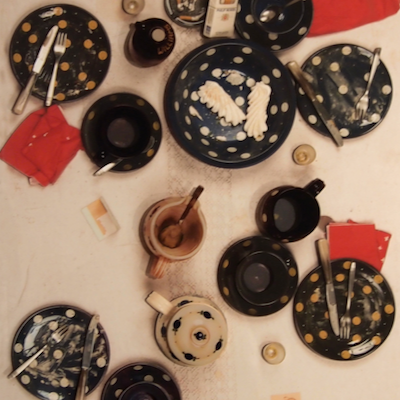
Details
Artist
Styles
Resin and acrylic sculpture - signed and numbered at the bottom - stamped "Résines d'art R.Haligon" // Nana Fountaine by Niki de Saint Phalle is a vibrant resin and acrylic sculpture created in 1991. Measuring 12.5 x 48.5 x 45 cm, the piece features the artist’s signature playful and colorful style, characteristic of her famous Nanas. The sculpture depicts exaggerated, curvaceous female figures arranged in a dynamic circle, emphasizing themes of femininity, joy, and liberation. The bright colors and bold patterns celebrate the strength and vitality of women. Stamped Résines d'art R.Haligon, the work is both signed and numbered, showcasing Saint Phalle’s iconic pop-art aesthetic and feminist perspective.
Nana Fountaine, 1991
form
Medium
Size
12.5 x 48.5 X 45 cm
- Inches
- Centimeters
Edition
Price
Details
Artist
Styles
Resin and acrylic sculpture - signed and numbered at the bottom - stamped "Résines d'art R.Haligon" // Nana Fountaine by Niki de Saint Phalle is a vibrant resin and acrylic sculpture created in 1991. Measuring 12.5 x 48.5 x 45 cm, the piece features the artist’s signature playful and colorful style, characteristic of her famous Nanas. The sculpture depicts exaggerated, curvaceous female figures arranged in a dynamic circle, emphasizing themes of femininity, joy, and liberation. The bright colors and bold patterns celebrate the strength and vitality of women. Stamped Résines d'art R.Haligon, the work is both signed and numbered, showcasing Saint Phalle’s iconic pop-art aesthetic and feminist perspective.
- Recently Added
- Price (low-high )
- Price (high-low )
- Year (low-high )
- Year (high-low )
What is Nouveau Realism?
Nouveau Réalisme is an artistic movement founded in 1960 by art critic Pierre Restany and painter Yves Klein during a collective exhibition at a gallery in Milan. Restany wrote the original manifesto in April 1960, proclaiming the movement. In October of that year, nine artists, including Martial Raysse, Yves Klein, Daniel Spoerri, Jean Tinguely, Arman, Pierre Restany, and three Ultra-Lettrists—Jacques de la Villeglé, François Dufrêne, and Raymond Hains—signed the declaration. In 1961, the movement expanded to include Mimmo Rotella, Niki de Saint Phalle, Gérard Deschamps, and César. The movement emphasized a return to reality in art, often incorporating everyday objects and exploring the boundaries between art and life.













